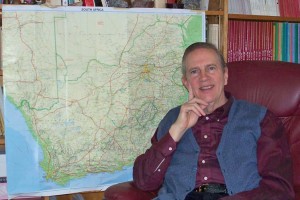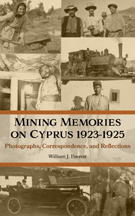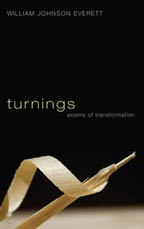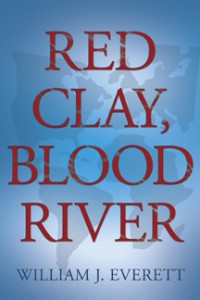JC Walkup, a writer and journalist in Haywood County, NC, has written a story about my novel in The Guide, published by The Mountaineer (Waynesville, NC) on February 25, 2009, p. 4. Here is an extensive excerpt from her piece, with permission of The Mountaineer.
“’What if’ Question Spurred Local Author’s Book Project”
by JC Walkup
Bill Everett’s epic historical novel, Red Clay, Blood River, grew from a question: “What would it be like if we could get into earth consciousness?” This initial query led him to this realization: “I wanted to turn my hand to a poetically written novel to probe the issues of ecological and human reconciliation.” The result of his goal is a story told through the life of a young woman, Thembinkosi, who is sold and  resold in the slave markets of South Africa, South America and ultimately America. Earth as a character, speaks both as a recorder of events from before the continents divided and a reconciler. Thembi and Earth communicate. When Thembi finds herself a slave to a Dutch family, she cries for losses and Earth responds. “But we(Earth and sea) could only answer with the mountain watching overhead and the warm earth of the garden….We drew her eyes through the window to the reddening flowers They blushed warm against he eyes, fed her for a moment. She became calm… ‘I will go on loving you my dear earth, let me take care of you….Help me live in such a cruel place.’ She cried a little and we swallowed her tears.”
resold in the slave markets of South Africa, South America and ultimately America. Earth as a character, speaks both as a recorder of events from before the continents divided and a reconciler. Thembi and Earth communicate. When Thembi finds herself a slave to a Dutch family, she cries for losses and Earth responds. “But we(Earth and sea) could only answer with the mountain watching overhead and the warm earth of the garden….We drew her eyes through the window to the reddening flowers They blushed warm against he eyes, fed her for a moment. She became calm… ‘I will go on loving you my dear earth, let me take care of you….Help me live in such a cruel place.’ She cried a little and we swallowed her tears.”
Characters in novels seldom get this large without being awkward to handle but Bill’s years of dealing with earth issues enable to see basic intersects between Earth as a character and mankind. In addition, Bill uses three contemporary young students to represent modern research and efforts to discover how mysteries of ecological import and human struggles need reconciliation to move forward.
Ten years of research included trips to South Africa to the battlefield of Blood River and research of that countries’ Great Trek that took place at the same time as the Cherokee Removal, otherwise known as The Trail of Tears. More journeys to Germany and England turned up unexpected connections. After publication, readers from across America wrote and e-mailed stories of connections through genealogy, both through formal records and oral family stories.
In South Africa in 1998 he worked with the Truth and Reconciliation Commission to reconstruct South African’s memory. The goal of this commission is to reconcile people of difference races and ethnic backgrounds. He discovered many interesting parallels such as this: representatives from the American Board of Foreign Missions were present at both the Great Trek and The Trail of Tears. ….







 Red Clay, Blood River
Red Clay, Blood River